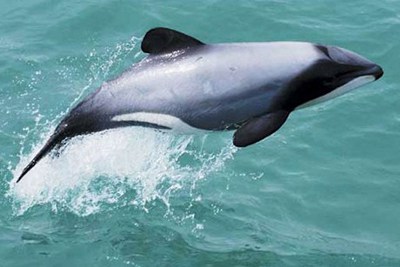Hector Dolphin
Category: Dolphin

Facts about Hector Dolphin, "Scientific name for Hector Dolphin is Cephalorhynchus hectori". The Hector Dolphin, also known as the Hector’s Dolphin, South Island Hector’s dolphin is only found in New Zealand’s southern coastal waters. Hector Dolphin is also one of the smallest marine dolphins. They grow to be only 3 1/8 to 5 feet (1 to 1 1/2 meters) long, whereas bottlenose dolphins grow to be 6 1/2 feet (2 meters) or more in length. The Hector Dolphin grow to be 100 pounds (45 kilograms) in weight, with the female Hector Dolphin a little larger and heavier than the males.
The Hector Dolphin is endangered. There are only eight thousand or so in the wild. Only the Maui dolphin is rarer, and that one lives around North Island in New Zealand. There are only about 110 Maui or North Island dolphins left. Hector’s dolphin is only found in New Zealand, and it is the only species native to New Zealand.
Hector dolphins have a rounded dorsal fin, whereas Maui dolphins don’t. Hector dolphins have well defined grey, black and white areas. The head, flippers, tail and dorsal fin are all black and black band is right behind the blow hole. The belly is overwhelmingly white. The rest of the body is gray. The Hector Dolphin do not have a discernable beak like bottlenose dolphins.
Like all dolphins, the Hector Dolphin feed on fish and crustaceans. Hector’s dolphins primarily hunt for fish, squid and crabs in the shallow coastal waters. They tend to live in small groups of two to eight. They are hunted by sharks and killer whales. This was confirmed by remains of Hector dolphins found in the stomachs of blue sharks.
The Hector Dolphin mature in five to nine years. Many females have their first calf between the ages of seven and nine. The Hector Dolphin live about twenty years in the wild.
Bottlenose dolphins routinely die in tuna nets, and Hector dolphins often die in gillnets as well. The light weight mesh is invisible to their sonar, and once entangled in the net, the dolphins drown because they cannot surface to breathe. Because of this, New Zealand has outlawed gill nets in marine protected areas that encompass their primary habitat.

 Back To Category Dolphin
Back To Category Dolphin